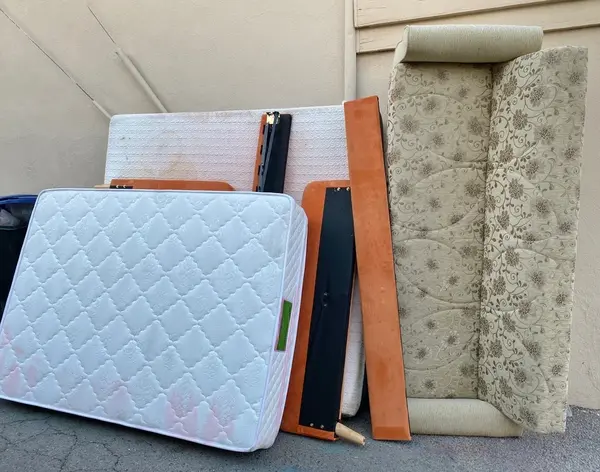Bedroom
Proper Mattress Storage: Tips and Best Practices

Protecting your mattress from mold, compression, and other damage ensures it remains in top condition for future use. Whether you’re keeping an old mattress as a spare or storing it temporarily, proper storage techniques are essential. Improper storage can lead to structural damage, mold growth, and an uncomfortable sleeping surface. Below are expert-recommended steps to store your mattress correctly.
Step 1: Choose an Ideal Storage Location
A temperature-controlled space is ideal for mattress storage, as excessive heat, cold, or humidity can damage its materials. Avoid storing your mattress in a garage or basement unless the area is climate-controlled. Additionally, ensure there is ample space to store the mattress flat on the ground rather than propped up against a wall.
Step 2: Prepare the Storage Area
Before placing the mattress in storage, clean the area thoroughly. Wipe down ceilings and walls, vacuum floors, and mop if necessary. Ensure all surfaces are dry before moving the mattress in to prevent moisture buildup.
Step 3: Deep-Clean the Mattress
Before storing, clean the mattress to remove dirt, dust, and potential allergens:
- Use a vacuum with an upholstery attachment to remove debris.
- Spot-clean stains following the manufacturer’s guidelines.
- Sprinkle baking soda over the surface, let it sit for 30 minutes, then vacuum it off.
- Allow the mattress to fully air dry before wrapping it.
Step 4: Cover the Mattress Properly
A protective cover helps prevent damage from dust, moisture, and pests:
- Use a mattress storage bag for optimal protection.
- Alternatively, wrap the mattress in a plastic sheet, sealing openings with duct tape.
- If storing a mattress topper, use a vacuum-sealed bag to minimize space and keep it clean.
Step 5: Move the Mattress Safely
When transporting the mattress to storage:
- Use a moving truck instead of tying it to a car roof to avoid exposure to the elements.
- If moving within the home, be cautious to prevent tears in the plastic covering.
- Mattress storage bags with handles make transport easier.
Step 6: Position the Mattress Correctly
- Always store the mattress flat to maintain its shape and structural integrity.
- If necessary, elevate it on a slatted bed frame or wooden pallets to allow airflow and prevent moisture buildup.
- If upright storage is unavoidable, place it between sturdy objects for support and use a protective covering.
Step 7: Monitor Storage Conditions
Regularly check the storage space to ensure:
- The temperature and humidity levels remain stable.
- There is no mold or mildew growth.
- Air circulation is adequate—occasionally open the cover to prevent odors and moisture accumulation.
- The mattress is rotated every few months to prevent sagging.
Step 8: Clean Before Use
When retrieving the mattress:
- Vacuum again to remove any dust or allergens.
- Check for any spots or stains and clean accordingly.
- Allow the mattress to air out for at least four hours before use to eliminate any storage-related odors.
Final Thoughts
Proper mattress storage ensures that your bed remains clean, comfortable, and free from damage. By choosing an appropriate storage space, cleaning the mattress before and after storage, and ensuring a stable environment, you can prolong the lifespan of your mattress and keep it ready for use whenever needed.
